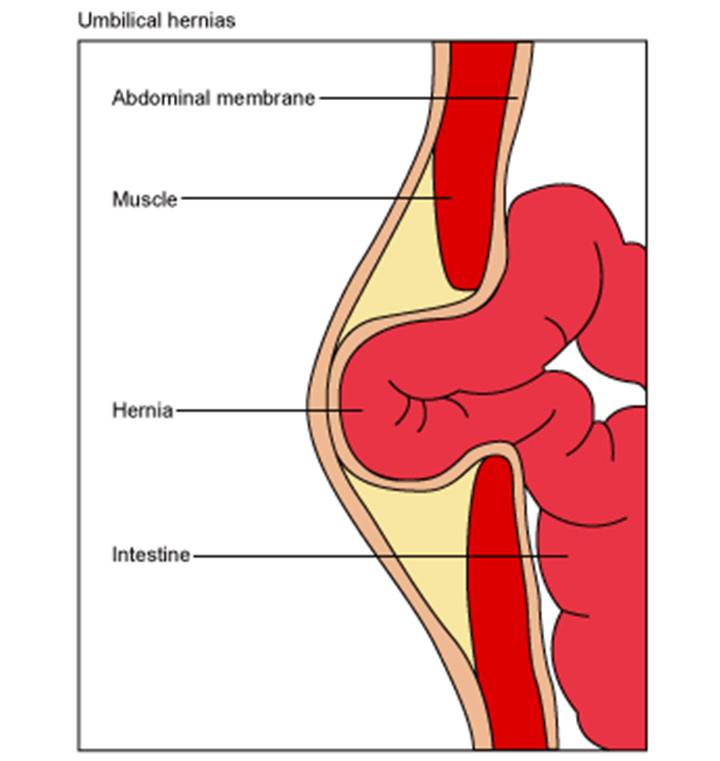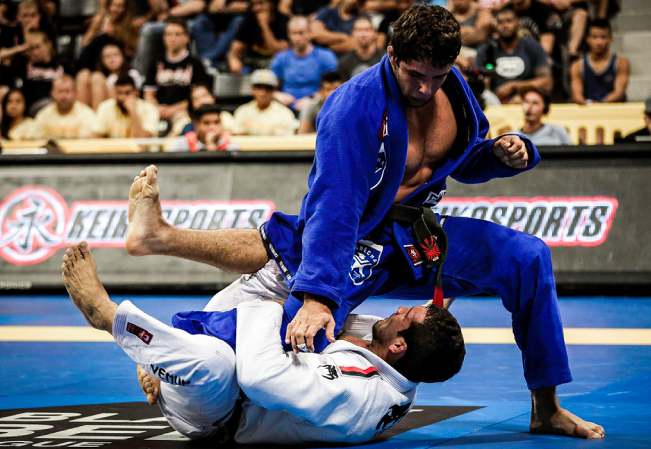Training Jiu-jitsu is great for the body and mind, but it can be highly demanding to the body according to the intensity of the drills and rolling.
When you are constantly rolling, you notice how tired your body gets, according to the opponent you face and how hard they go at you.
When you are the smaller fighter, you probably use most of your strength to battle against the bigger and stronger opponents, while you handle opponents of the same size or smaller with little force and are more reliant on your technique.
It is on pushing yourself a little bit too hard when we can cause problems to ourselves; the issue we will dive into right now is training BJJ with umbilical hernias.
Table of Contents
- The Anatomy Of The Umbilical Hernia
- Can I Do BJJ With An Umbilical Hernia?
- How To Do BJJ With An Umbilical Hernia
- Umbilical Hernia Belts For Working Out
- What Other Activities Are Suitable For Someone With An Umbilical Hernia?
- Jiu-Jitsu With Umbilical Hernia FAQs
- BJJ With An Umbilical Hernia Final Thoughts
The Anatomy Of The Umbilical Hernia
Knowing the reason behind an umbilical hernia is part of learning how to handle what to do with it, as the symptoms will vary among cases.
Umbilical hernias are a common form of hernia in adults, and they occur When bowel or fatty tissue pushes through a weak area in the abdominal wall near the navel.

They happen within three centimeters (cm) of a person’s navel, either above or below.
The risk of developing umbilical hernias increases with pressure on the abdominal muscles. Pregnancy or heavy lifting at the gym will increase said pressure.
Increased pressure can happen due to multiple reasons when you practice Jiu-Jitsu, like trying to lift that one training partner 30lbs over your weight or surviving his knee in belly positioning for far too long.
If the abdominal wall constricts around the hernia, it can cut off circulation to the protrusion, resulting in pain.
Umbilical hernias in adults tend to almost always require surgery to fix it.
However, you do not have to be afraid of the surgery needed to fix an umbilical hernia. It takes 20 to 30 minutes, and you will be under general anesthesia for the duration of the procedure.
It is also likely that the person receiving surgery will be able to go home the same day that the procedure is done. After surgery, the resting period should be somewhere between 4 to 8 weeks for a full recovery, which is not bad.
Can I Do BJJ With An Umbilical Hernia?
Practicing Jiu-Jitsu when you have an umbilical hernia is possible, but not recommended for every case. However, as long as you know what you can do and what you should avoid, It is possible to still make slow and steady progress in your BJJ.
Being reckless and putting yourself through unnecessary stress could lead to disaster, as we will explain in a moment.
The problem is not that the hernia itself will stop you from performing a move or slow you down overall, but it is more than likely that you will put more pressure on the abdominal area and cause more complications to the hernia.
Here are some examples of the things that could happen during training and that could potentially cause more complications:
Applied Pressure
If the protruding tissue doesn’t hurt, just wait until someone lands a knee-on-belly right on it.
It will cause discomfort and pain, which will likely be the reason to rush with the doctor, as not treating it will only bring health complications closer and closer.
Hernia rupturing is a possibility
If a hernia ruptures, you will need emergency surgery. However (And thankfully), hernia ruptures are extremely rare.
Hernias are also less likely to resolve unassisted in adults than in kids.
Therefore, an adult has a higher chance of needing surgery.
check the Best Umbilical Hernia Belt For Working Out
How To Do BJJ With An Umbilical Hernia
Having an Umbilical Hernia doesn’t mean that you can’t train BJJ at all. It only means that you have to be more careful when you do so.
Can you train BJJ with an umbilical hernia?

If you find people’s stories and experiences in BJJ Forums, you may see some trained with umbilical hernias for a year before surgery and getting the issue fixed.
In most cases, things will be pretty normal overall. You will be able to drill and practice just like any other practitioner.
However, be cautious when being pressured (knee-on-belly especially) of pain and discomfort.
So at least from their experience, it seems like you could go to class as usual and drill techniques, practice your moves and even roll just like any other regular day.
It will only be a matter of pacing yourself and asking your partner to be careful when rolling, but it shouldn’t be too much of a problem.
As long as you can handle yourself and make sure that you are not feeling pain from your umbilical hernia, you should be good to drill and roll.
How Can I Strengthen My Abs With An Umbilical Hernia?
It is good not to over-stress the abdomen if you are dealing with an umbilical hernia.
You can do all types of abdominal exercises to strengthen the muscles. Still, you will likely do better waiting until you recover from surgery to put some actual stress into the abs training.
Keep things light and be well-rested between any series of exercises.
You may be eager to keep pushing forward, but sometimes, it is better to slow down and rest than to cause an injury that could seriously halt your progress on the mats.
What activities should be avoided with an umbilical hernia?
Avoid sudden twisting movements, rolling, or sitting in an awkward way. Avoid abdominal exercises and other types of exercise which can strain the abdomen. Abdominal exercises using isometrics, such as abdominal crunches and side bends, should be avoided.
However, instead of focusing on specific exercises to void, you should stay away from any activity that adds physical pressure to the abdominal area. Which means not letting your opponents and drill partners land the knee-on-belly.
It would be best to try not to stress yourself when trying to throw or do a takedown.
If things are not looking your way, you may want to back down from rolling with that one training partner who has more than 25 lbs on you, just in case.
Do not be ashamed of sitting out during the whole rolling part of the class if you feel like you need to rest. Your health should always be your priority.
Umbilical Hernia Belts For Working Out
An umbilical hernia belt for working out is an elastic or Velcro belt designed to be worn around the abdomen to provide support for a protrusion of abdominal contents.
The wrap-around and Velcro variants are the most common types of hernia umbilical hernia belt styles. These best Umbilical hernia belts use light, breathable fabrics that can easily be hidden under clothes or skirts.
Can I work out with a hernia belt?
Possibly, but you need to be careful. Don’t push yourself too hard or too quickly. You also want to avoid putting a lot of pressure on the hernia area.
Do umbilical hernia belts work?
Yes and no. A hernia belt is a physical aid. It will not fix the problem, but it can help manage and decrease the discomfort associated with a hernia.
How to wear an umbilical hernia belt?
It’s not comfortable to wear a belt for long periods. However, the belt must be worn in the correct position. The belt should be worn around the stomach at about waist level. This will put pressure on the hernia to reduce pushing it out.
An umbilical hernia belt is an elastic or Velcro belt designed to be worn around the abdomen to provide support for a protrusion of abdominal contents. These belts are commonly used by pregnant women and men with umbilical hernia.
The wrap-around and Velcro variants are the most common types of hernia umbilical hernia belt styles. These best Umbilical hernia belts use light, breathable fabrics that can easily be hidden under clothes or skirts.
What Other Activities Are Suitable For Someone With An Umbilical Hernia?
Suppose you take a break from the mats while waiting for your surgery to recover from an umbilical hernia.
In that case, that is perfectly fine, and there are multiple other activities you can do to keep yourself active.
Rock Climbing (Top Rope and Bouldering)
One of the alternatives you could try is rock climbing. More specifically, top-roping and bouldering on any indoor climbing gym.
Rock climbing is one of the preferred hobbies by some top-level grapplers due to how good a grip it develops and how easily it can transfer to BJJ.
Besides, it will ease off the pressure of your abdomen as you focus on your limbs, grip strength, and leg positioning.
Cardiovascular work
Any cardio workout is likely to positively impact your Jiu-Jitsu and allow the abdominal area to rest as you prepare for surgery.
Some of the options include:
- Walking.
- Jogging.
- Running.
- Swiming.
- Cycling.
These are excellent options for keeping yourself active and your heart working at a pace that will help your BJJ practice when you return to the mats.
Light Yoga and Stretching
The last option we place on the table is light yoga and stretching.
The reason behind it is simple; if you allow yourself to stretch and better control your flexibility and movement, you’ll have a lot of open doors for techniques once you get back into the mats.
Also, yoga is a gentle way to stay in good shape while you’re off the mats.
Multiple techniques are easier to pull the more flexible you are, and some others just require it off the bat, like the rubber guard.
You can take time off the mats to better control your body and get closer to pulling that tricky Hindullotine out of the bag whenever the moment calls for it.
Jiu-Jitsu With Umbilical Hernia FAQs
Are hernias common in BJJ?
Hernias are somewhat common in BJJ as there are a lot of explosive moves in the abdominal area caused by intense grappling. Probably not as common as knee injuries, but enough to make you roll with precaution.
CAN I STILL LIFT WEIGHTS WITH A HERNIA?
Some athletes may need to stop lifting weights for healing purposes. furthermore, most doctors will tell you to stay away from the gym as it might make your injury worst.
What worsens a hernia?
A hernia can increase in size when the abdominal muscles are used excessively or injured. Anything that applies a lot of pressure on the abdomen can get it bulged out.
BJJ With An Umbilical Hernia Final Thoughts
Having an umbilical hernia doesn’t mean you have to halt your BJJ practice altogether. Still, it is an opportunity to slow down and focus on it from a different angle as you prepare to fix the minor issue.
Take the time to rest, understand your body, and limit what you can and should do to progress without causing any harm to yourself.
If you found the article interesting, you can always share it with your training partners so they have a fun read.




